Most of the grand mausolea we see in Victorian cemeteries are private spaces, accessible only to the families of those interred within or blocked off and sealed forever to keep vandals out. However, today we are visiting a mausoleum with an unusual story attached to it: one where its doors are occasionally opened and where visitors can view the coffins and memorials within. This might seem like a strange thing to do, even an intrusion, but the man who commissioned the mausoleum regularly visited it himself while he was still alive, and today the mausoleum’s well-preserved interior serves as a testament to the affection in which he held his young mistress.

This is the beautiful Kilmorey Mausoleum, the final resting place of Francis Jack Needham, 2nd Earl of Kilmorey, and Priscilla Anne Hoste, located in a walled garden in Twickenham, Middlesex.
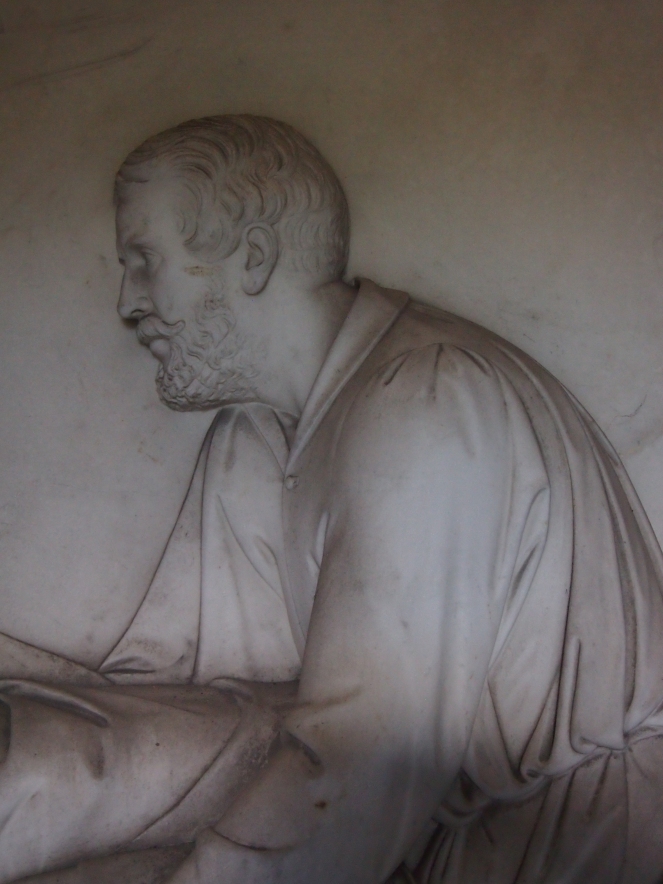
Priscilla was not the Earl’s wife. She was over thirty years younger than Kilmorey. After her father died young, she and her siblings became the wards of the Earl, who knew their mother, Lady Harriet Walpole. Priscilla and the Earl eloped in 1843, when she was twenty years old, causing a considerable scandal. The Earl was already married, with grown-up children, and forty years Priscilla’s senior. In June 1844, newspapers carried stories of a legal case in France involving Priscilla and Kilmorey. Priscilla, still aged under 21, was still legally a minor, and had been placed in the custody of a Dr Pinel in Paris. According to the reports, by June 1844 Priscilla was pregnant and her mother was seeking to regain custody of her.
Priscilla’s mother was not spoken of in flattering terms by the newspaper coverage, and it was alleged that she may have allowed or even encouraged her daughter’s affair with Kilmorey to develop in the hope of gaining access to Kilmorey’s fortune. Lady Hoste’s connection with Kilmorey was described as being “not calculated to serve the reputation of that lady, or that of her daughters.” Evidence was shown at the trial of letters which showed Lady Hoste giving Kilmorey permission to spend time alone with Priscilla. Coverage of the trial reported some of the content of these letters:
My daughter shall be ready for you in an hour, to do all that you wish. You will give me the consoling assurance that you continue to ride out with Priscilla. I would ardently wish to partake of your pleasures… I will not pay the expense, but I will bring Priscilla to dine with you on the 13th. I do not know what other days you may wish to see her. (Southern Reporter and Cork Commercial Courier, 22nd June 1844)
However, the elopement of the couple and Priscilla’s pregnancy appeared to have caused a change of attitude from Lady Hoste, and when Priscilla and Kilmorey were discovered living together in France, Priscilla was removed from the earl and treated cruelly by her mother, despite her condition during the later months of pregnancy. Lady Hoste “went as far as to deprive her daughter of her clothing; and left her with but a coarse sack to cover her.”
[Priscilla] said that she should prefer being placed in a convent to remaining with her mother, who had used her so cruelly that she had kept [to] her bed [for] three weeks… [Priscilla’s brother commented that] his mother had threatened to remove his sister Priscilla to America, and to kill her infant; and such was the violence of her temper that another of his sisters was obliged to seek the protection of an aunt at Burges. (Dundee, Perth and Cupar Advertiser, 28th June 1844)
In the end, the court ruled that Priscilla – for the sake of her health and that of her unborn child – should remain under the guardianship of Dr Pinel until she reached the age of twenty-one.
Despite this scandalous and rather dramatic beginning to their relationship, not to mention the large age difference between the two, it seems that the couple remained together for the rest of Priscilla’s life. Priscilla was not sent to America – the court ruling seems to have kept her mother’s schemes out of the picture – and Kilmorey did not abandon her. A home was set up for Priscilla which was connected to Kilmorey’s home by an underground tunnel. A son, Charles, was born in August 1844. Despite being illegitimate, the Earl publicly acknowledged Charles as his son and the boy took his father’s surname, Needham. The newspaper reports of their elopement and Priscilla’s pregnancy paint Priscilla as a victim (both of the older earl’s attentions and the scheming of her mother), but it appears that there was a genuine affection between the couple, and certainly Kilmorey provided well for her and their child.
Priscilla, still only a young woman, was diagnosed with a terminal illness in 1851, and Kilmorey, distraught at the prospect of losing her, commissioned a grand memorial. The architect chosen was Henry Edward Kendall, who was well-respected. Kilmorey purchased a prime plot at Brompton Cemetery, and a beautiful Egyptian-style mausoleum was built, costing £30,000. Priscilla died in 1854 and her coffin was quietly laid to rest in this splendid tomb. Her identity as the occupant of the mausoleum was not made public.
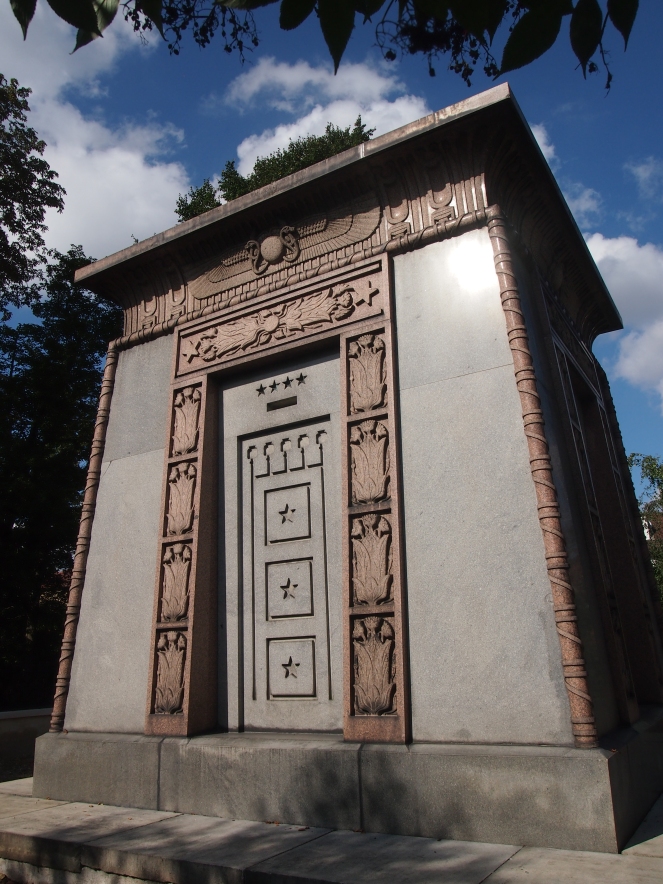
The tomb’s exterior is adorned with many of the symbols associated with ancient Egypt and the 19th Century Egyptian Revival, including winged sun discs and stylised lotus flowers.

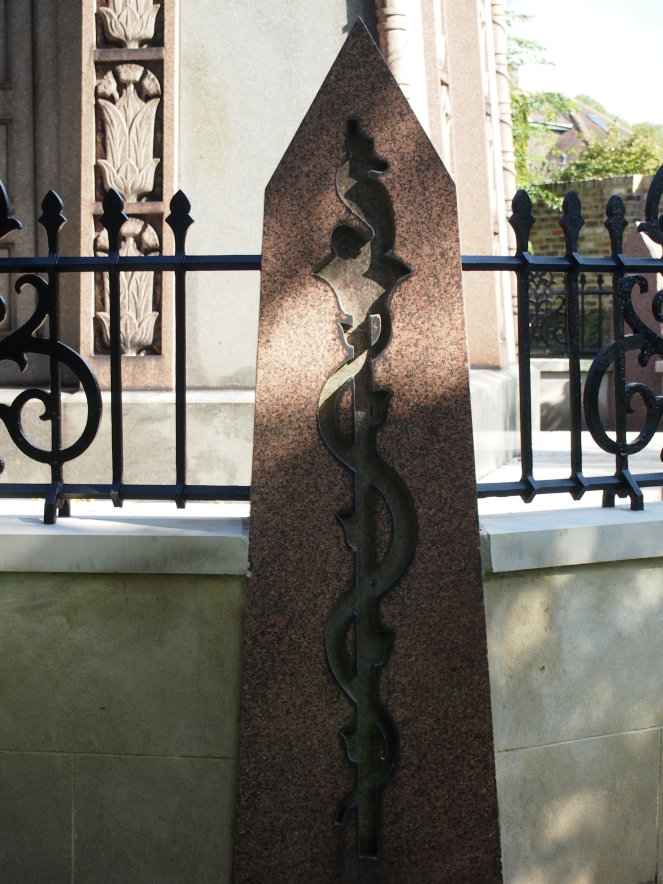
In the roof, star-shaped skylights glazed with yellow glass let some light into the mausoleum’s interior.

Inside the mausoleum, the decoration shows a Neoclassical, rather than Egyptian, influence. A lavish marble relief carving produced by the artist Lawrence MacDonald, pictures Kilmorey and young Charles mourning over Priscilla’s body, while an angel above them points to Heaven. The quality of this piece is evident in the richly detailed figures, particularly the folds of fabric in their clothing.

The mausoleum did not remain in Brompton Cemetery for very long. In 1862, Kilmorey had the mausoleum relocated to the grounds of Woburn Park, an estate he owned near Weybridge in Surrey. Having the monument located on his own property made it easier for Kilmorey to visit his lover’s grave and mourn her in private. The mausoleum was moved for the final time to its current location in Twickenham in 1868, when Kilmorey moved to Gordon House.
Kilmorey died in 1880, at the age of 92. Newspaper reports that covered his simple funeral, attended only by his relatives and servants, commented that his coffin had been commissioned 25 years earlier (presumably around the time of Priscilla’s death) and had resided in the mausoleum until the time came for Kilmorey to be buried within. Priscilla is not referred to by name in any of these reports, and is simply referred to as a “deceased friend.”
To avoid the public highway, which divides from the house that portion of the grounds in which the mausoleum is erected, the late earl had a tunnel specially made through which the coffin might pass, with a tramway and car for its reception. The peculiar wishes of the deceased earl with respect to the funeral were carried out in their entirety. (Manchester Courier and Lancashire General Advertiser, 26th June 1880)
The tunnel that linked the mausoleum with Kilmorey’s home was apparently quite regularly used while the earl was still alive. He would allegedly ‘rehearse’ his final journey to the mausoleum by wrapping himself in a shroud, lying on a trolley and being wheeled through the tunnel to the tomb by servants. Both of Kilmorey’s wives (he remarried in 1867 after the death of his first wife) were forbidden from entering the mausoleum.
However, visitors today are not forbidden from entering and can view the lead, velvet-covered coffins of Priscilla and the earl, both remarkably well-preserved with their original decorations largely intact. The damage to the coffins is relatively recent, occurring in 1987 when the mausoleum was battered by the infamous Great Storm.


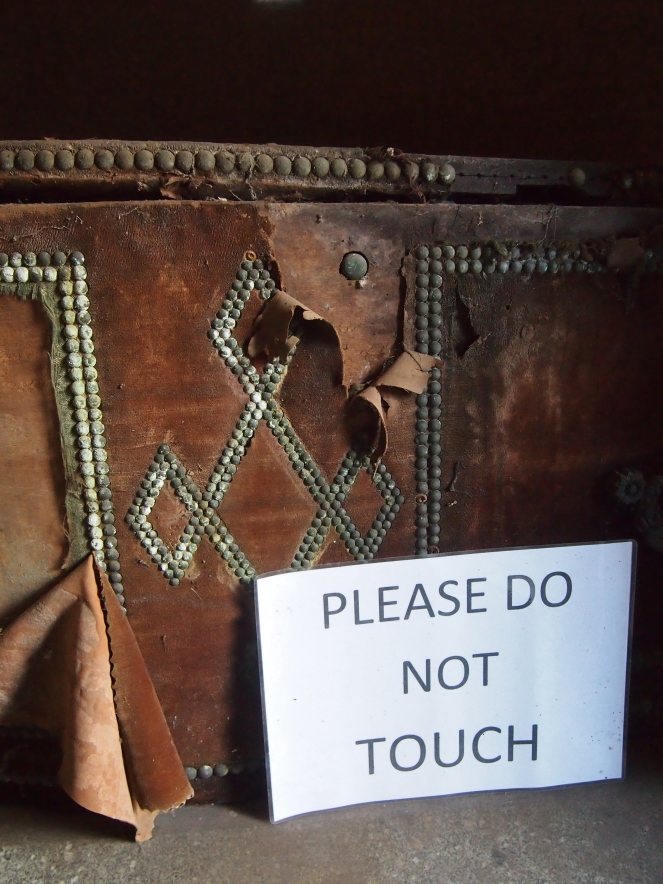
After Kilmorey’s death, he left Gordon House to Charles, the son he’d had with Priscilla. In 1936, the mausoleum was left in perpetuity to Hounslow Council. Administrative boundary changes later brought it under the management of Richmond upon Thames Council. In recent years the mausoleum has undergone extensive restoration, and the garden it is situated in has been specially managed to provide a habitat for a wide variety of wildlife, plants and fungi. The site’s restoration has allowed it to be opened to the public for the first time, and the garden is managed by a team of volunteers.
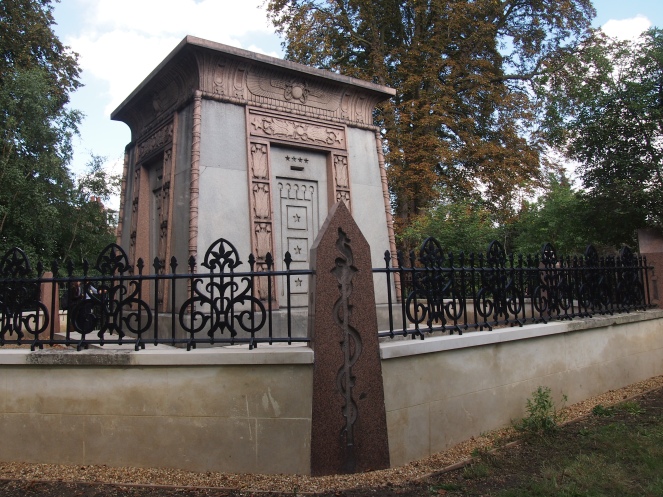
This fascinating mausoleum is Grade II* listed by Historic England, not only for its merit as an example of Egyptian Revival funerary architecture, but for its unusual story and excellent state of preservation. The listing describes it as “a fine example of an Egyptian-style mausoleum, with an unusually good interior, this structure has had a remarkable history of relocation reflecting the affection Lord Kilmorey felt for his mistress, even in death.”
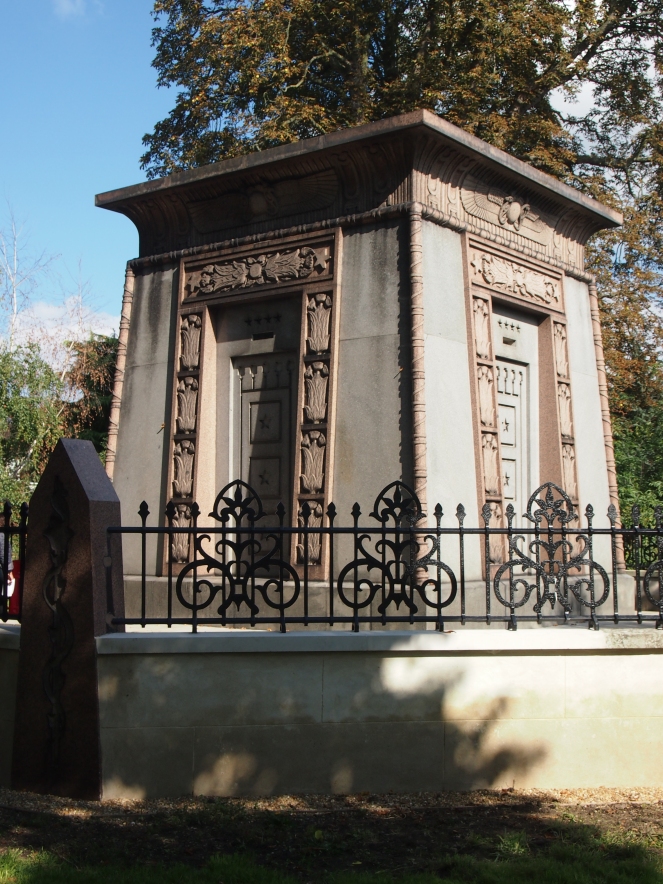
The Kilmorey Mausoleum is occasionally open to the public for special open days – please see this webpage for more details.
References and further reading
Kilmorey Mausoleum, Environment Trust
The Kilmorey Mausoleum (including enclosure wall, railings and gate), Historic England List Entry
The Earl of Kilmorey, Twickenham Museum
Kilmorey Mausoleum, Mausolea and Monuments Trust
The newspaper reports quoted in the article were accessed via the British Newspaper Archive.
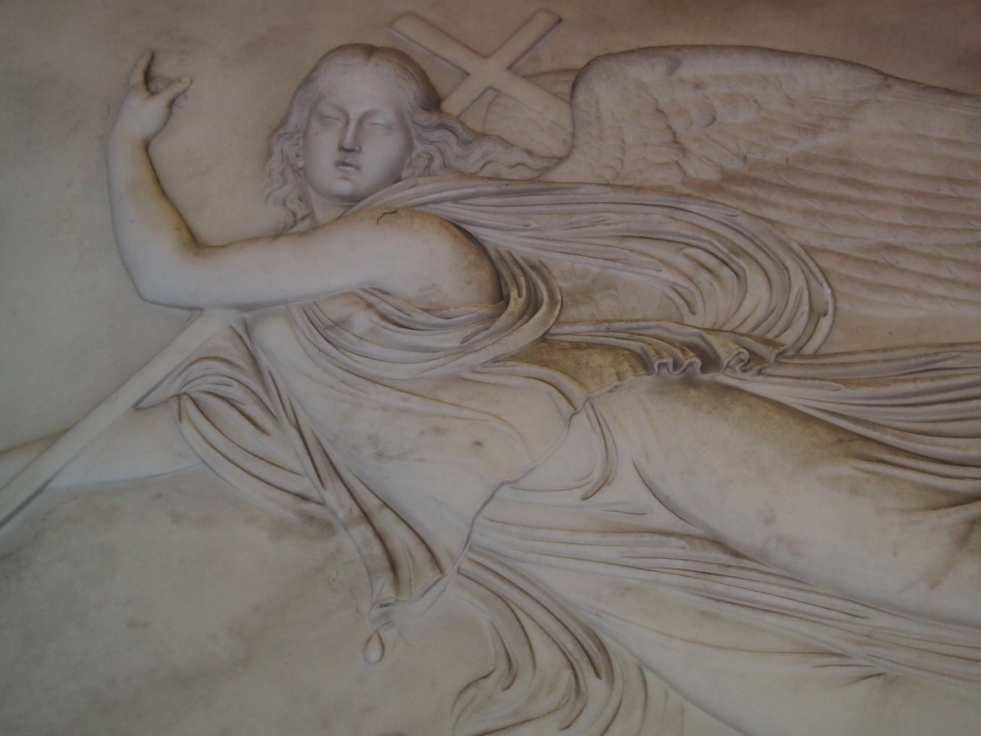

Interesting. Thanks.
LikeLiked by 1 person
One of my favourite mausoleums!
LikeLike
I love Kilmorey Mausoleum! I volunteered there last London Open Weekend, and relatives of both Priscilla and the Earl unexpectedly showed up, which was pretty great. It’s a gorgeous tomb!
LikeLiked by 1 person